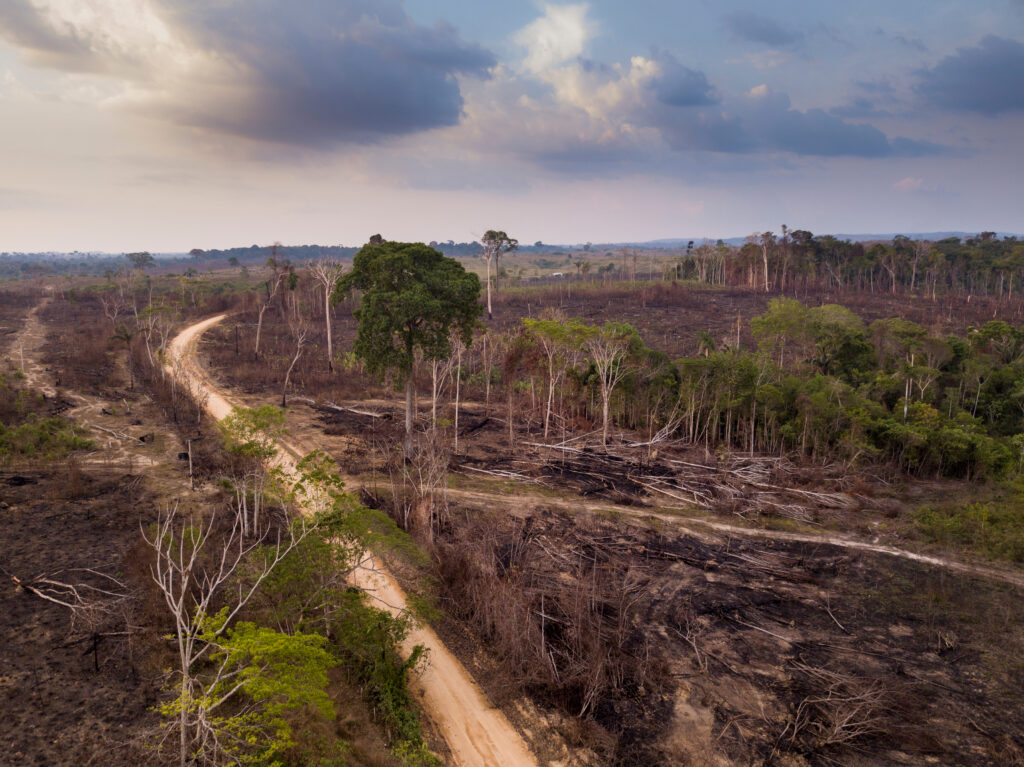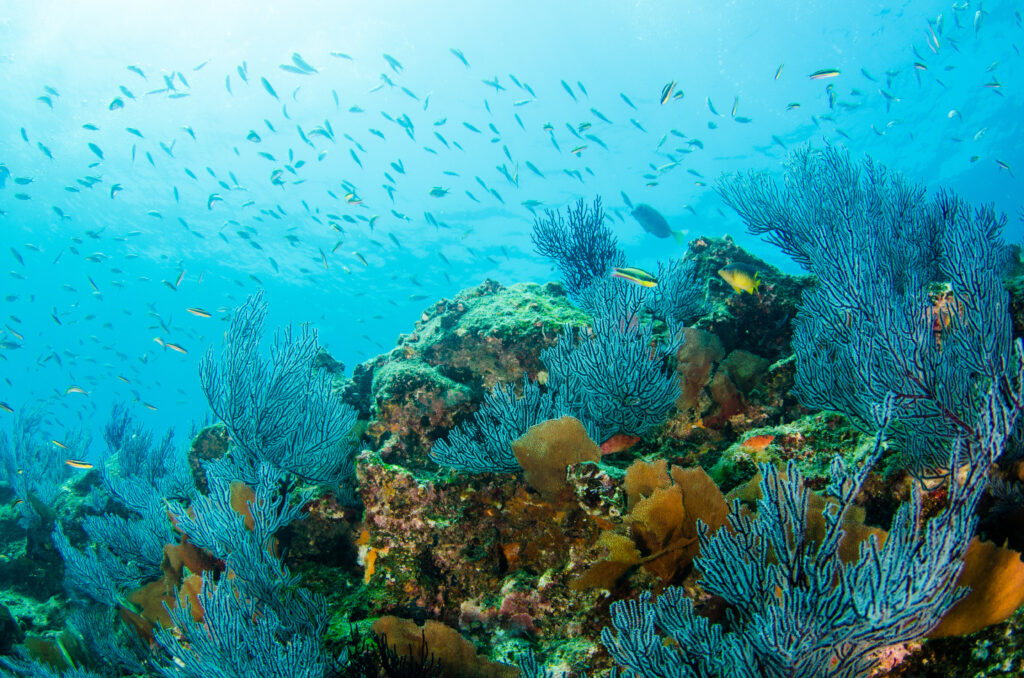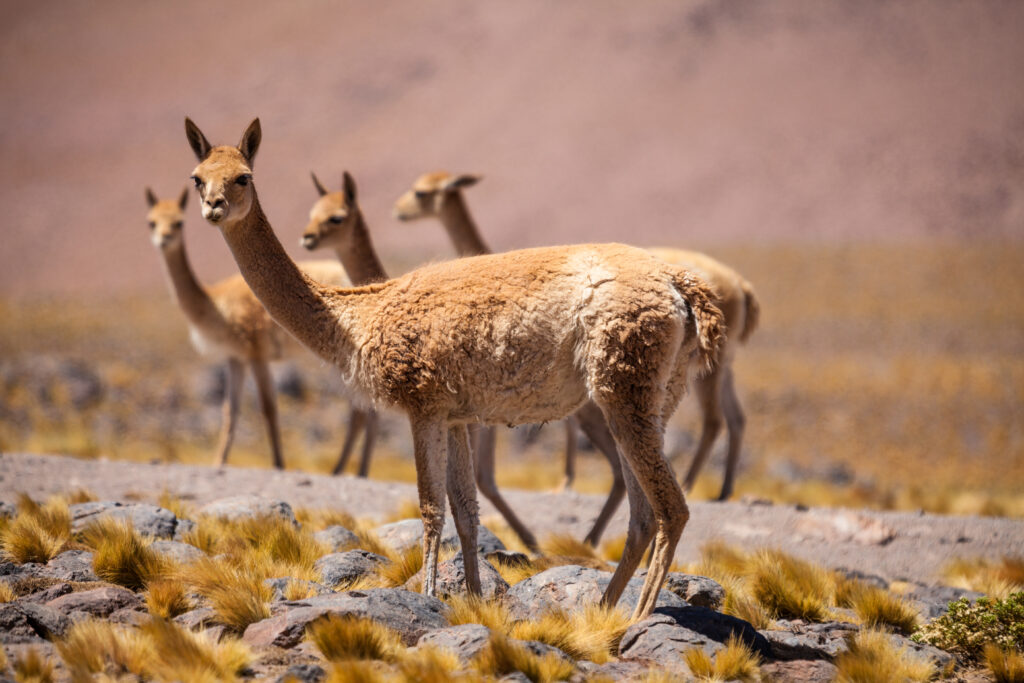

UN Secretary-General António Guterres has talked about a “triple planetary crisis” underway, represented by climate disruption, pollution and waste, and biodiversity loss.
The biodiversity aspect of the triple crisis has been in the spotlight lately, including at two major UN conferences held late last year. The stakes are high: The New York Times described the loss of biodiversity as “a mounting under-the-radar crisis that, if left unchecked, jeopardizes the planet’s food and water supplies as well as the existence of untold species around the world.”
Approximately 25% of the world’s species are already threatened with extinction, according to a 2019 report issued by the Intergovernmental Science-Policy Platform on Biodiversity and Ecosystem Services (IPBES).
“Biodiversity—the diversity within species, between species and of ecosystems—is declining faster than at any time in human history,” the report said.
When it comes to the state of global vertebrate wildlife populations, the figures are especially dire. According to the Living Planet Report 2022, issued by the organization WWF–World Wide Fund for Nature, the abundance of mammals, fish, reptiles, birds, and amphibians monitored across the globe declined by an average of 69% between 1970 and 2018. Latin America had the biggest average regional decline, at 94%.

Jaguars, which range across 18 countries in Central and South America, need connected spaces in which to roam.
In opening remarks to the 15th Conference of Parties to the UN Convention on Biological Diversity—also called the UN Biodiversity Conference—Guterres warned that the world is not just out of harmony with nature but “playing an entirely different song.”
“Without nature, we are nothing,” he said. “Nature is our life-support system.”
The meeting, chaired by China and hosted by Canada, took place December 7-19 in Montreal. Representatives from 188 nations adopted the Kunming-Montreal Global Biodiversity Framework, which lays out four goals and 23 targets to be achieved by 2030. (The text is available here in the official UN languages.)
In the weeks leading up to the Montreal meeting, meanwhile, representatives of more than 160 governments met in Panama City, Panama, for the World Wildlife Conference, more formally called the 19th Conference of the Parties to the Convention on International Trade in Endangered Species of Wild Fauna and Flora (CITES).
At the meeting, which took place November 14-27, the countries adopted proposals to regulate international trade in more than 500 new species. These include nearly 100 species of sharks and rays; more than 150 tree species; 160 amphibian species, including tropical frogs; 50 turtle and tortoise species; and several species of songbirds, according to a press release announcing the results.
Under CITES, countries have the “responsibility to address the biodiversity loss crisis by taking action to ensure that the international trade in wildlife is sustainable, legal and traceable,” the Secretary-General of CITES, Ivonne Higuero, noted in the same press release.
“Trade underpins human well-being,” she said, “but we need to mend our relationship with nature.”
It’s been nearly 50 years since the signing of CITES (pronounced SY-tees). The milestone will be celebrated on March 3— World Wildlife Day—in Washington, D.C., the city where the convention was signed on that date in 1973. The treaty, which entered into force in 1975, now has 184 parties and lists nearly 40,000 species subject to regulation, the majority of which are orchid species.

CITES Secretary-General Ivonne Higuero stressed that the climate and biodiversity crises cannot be separated: “Everything is interlinked.”
Wild plants and animals are exported and imported for all sorts of reasons, from the pet trade to the fashion industry. Some species are valued as food, others for their ornamental or medicinal properties.
Regulating trade is essential to ensure the survival of species in the wild, Higuero said in a recent interview with the Energy and Climate Partnership of the Americas (ECPA). While many countries depend on these natural resources for jobs, she said, it is important to ensure that such jobs can be sustainable.
“If you take out a number of populations of species, you can’t have a sustainable trade, you can’t have this for future generations,” she said, speaking from the CITES Secretariat headquarters in Geneva, Switzerland.
CITES places controls on international trade in animals and plants (as well as their parts and derivatives) listed in three categories. The biggest category, included in its Appendix II, covers species that are not necessarily threatened with extinction but need to be regulated to avoid overexploitation. Appendix I includes the most threatened species, and trade in them is permitted only in exceptional circumstances, such as scientific research. Appendix III covers cases in which national legislation protects a species in at least one country and that country has asked for assistance in controlling the trade.

Plants and animals, such as this green iguana caged in an animal market, are exported and imported for all sorts of reasons, from the pet trade to the fashion industry.
Getting a species listed by CITES is only a first step, Higuero said. Parties must issue scientific and legal findings for the species and establish a permitting system to allow only a limited volume of trade.
“At the end of the day, you need to know that what you’re exporting is not going to cause damage to the species in situ, that the survival of the species in the wild is not going to be decreased or hurt,” she said.
International trade in CITES-listed species is estimated at over $11 billion per year, about 84% of which is in plant species, according to the World Wildlife Trade Report published by the CITES Secretariat in November. The total annual revenue generated by the global legal trade in wildlife has been estimated at $220 billion, the report said. (The value of the illegal wildlife trade, it said, is estimated at $7 billion to $23 billion per year.)
Climate change is one of the factors threatening biodiversity, Higuero said, but it is not the only one. “The main threat to the survival of wildlife is habitat loss and habitat fragmentation,” she said, adding that overexploitation of species is another.
What is becoming increasingly clear, she said, is that the climate and biodiversity crises cannot be separated.
“Everything is interlinked. This is the realization that we have to come to, that you can’t take care of these things in silos,” she said.

Marine species are vulnerable to warming ocean temperatures. Here, a coral reef in Mexico’s Cabo Pulmo National Marine Park.
The potential negative impacts of a warming planet on the world’s flora and fauna are numerous, Higuero explained. Changes in climate can affect the vegetation on which different species depend and lead to new diseases that threaten their existence. Warming ocean temperatures can wreak havoc on marine species. In Kenya, Higuero said, droughts are forcing elephants to move closer to human populations in search of water and food.
Conversely, Higuero noted, biodiversity can mitigate some of the impacts of climate change and make ecosystems more resilient, as happens in the case of healthy forests.
In the interview with ECPA, Higuero also talked about the richness of biodiversity in Latin America and the Caribbean. Among the world’s 17 countries considered “megadiverse,” six are in Latin America: Brazil, Colombia, Ecuador, Mexico, Peru, and Venezuela.
Higuero, who is originally from Panama, said that habitat loss is having a serious impact on many species that need connected spaces in which to roam—including the jaguar, which she called an “emblematic animal for the region.” (A regional effort called the Jaguar 2030 Conservation Roadmap for the Americas is seeking to protect the wild cat, whose geographic range currently extends across 18 countries in Central and South America, according to one report.)
At the recent World Wildlife Conference, the CITES parties agreed to support Mexico in its efforts to save the vaquita porpoise from extinction, according to the press release issued at the end of the conference. The species has been severely depleted—fewer than 20 of the small porpoises are believed to remain in the Gulf of Mexico—as a result of fishing for a different species, the totoaba. The press release said the parties agreed to an approach designed to limit totoaba fishing and thereby reduce the threat to the vaquita.
Higuero applauded such steps as the establishment of the Eastern Tropical Pacific Marine Corridor, a joint effort by Colombia, Costa Rica, Ecuador, and Panama to protect a migration thoroughfare for whales, sharks, and a host of other marine animals.
In the Caribbean, meanwhile, CITES is supporting efforts by the Organisation of Eastern Caribbean States to improve sustainability in the trade of queen conch, a large sea mollusk traded for its meat and shell.
Many plant species in the region are also listed under CITES, ranging from exotic orchids to trees harvested for timber—including, for example, a species of rosewood known in Panama as cocobolo, which is used for everything from kitchen knives to boats to marimbas.

Trade in all orchid species is regulated under CITES. This clamshell or cockleshell orchid, as it is commonly known (Prosthechea cochleate), is native to the Caribbean Basin.
One example of a species that has seen its numbers rebound over the years is the vicuña. Once included in the CITES Appendix I, the species eventually recovered enough to be down-listed to Appendix II, allowing for sustainable use and trade. The World Wildlife Trade Report included that example as a case in which “the introduction of legal, regulated harvest and trade has helped to reverse the decline.”
Higuero hopes that in the future, new ways can be found to bring more private investment into conservation efforts, to support countries and communities that are providing the world with biodiversity, which she called “a service.”
“Just the knowledge that this wildlife exists gives satisfaction to people all over the world,” she said, “but there are costs to conservation.” For example, she added, it takes funding to establish protected areas and hire rangers to look after them, and many countries need outside support.
“We have to find innovative ways of doing that, not only with public funding but with private financing as well,” she said.

The vicuña is one species that has seen its numbers rebound over the years.
 View Map
View Map